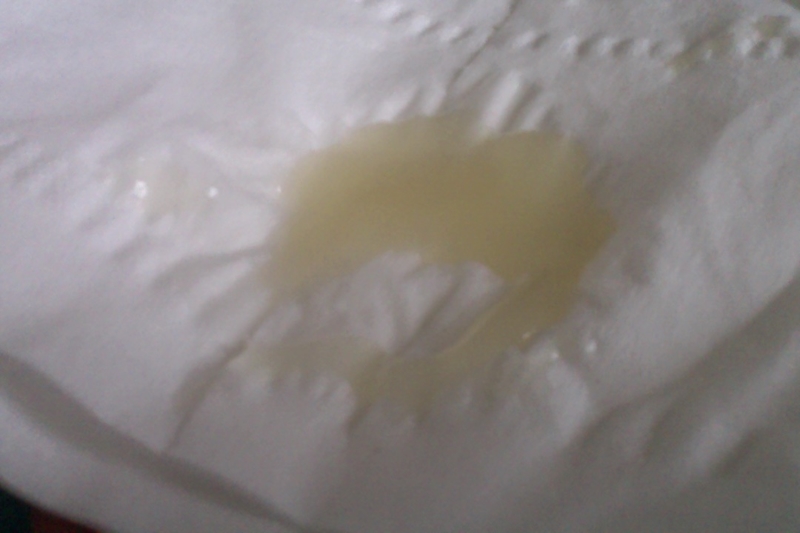Understanding Yellowish Sperm: A Closer Look
As men, we may occasionally notice variations in the color of our semen, such as yellowish or off-white hues. While this might be concerning, it is important to realize that slight color changes in sperm can occur for numerous reasons. Here, we will delve into some of the potential causes behind yellowish semen.

Possible Reasons for Yellowish Semen:
1. Urine Contamination:
One common cause of yellowish sperm is urine contamination. During ejaculation, some urine might mix with the semen in the urethra, leading to a yellowish appearance. This condition can be easily resolved by ensuring that the bladder is fully emptied before sexual activity.
2. Dietary Factors:
Believe it or not, your diet can impact the color of your sperm. Consuming certain foods with intense pigments, like carrots or beets, can temporarily cause a yellowish tint. Additionally, excessive consumption of caffeine or alcohol may also affect the color of your semen.
3. Infection and Inflammation:
Under certain circumstances, yellowish sperm may indicate an underlying infection or inflammation of the reproductive system. Conditions like epididymitis, prostatitis, or sexually transmitted infections (STIs) may cause yellow-colored semen. If you are experiencing other symptoms like pain or discomfort, it is essential to consult a healthcare professional for further evaluation.
4. Medications and Supplements:
Some medications and supplements can alter the color of your sperm. High doses of certain vitamins, such as vitamin B or C, might cause your semen to appear yellowish. If you suspect that your medication or supplement is causing this change, consult your doctor for possible alternatives.
When to Seek Medical Advice:
In the majority of cases, yellowish semen is harmless and temporary. However, if you experience persistent changes in color accompanied by other concerning symptoms like pain, discomfort, or blood in semen, it is crucial to consult a healthcare professional.
Medical professionals can perform various tests to determine the underlying cause of the discoloration, ensuring any necessary treatment is initiated promptly. Remember, seeking medical advice is always the best course of action when in doubt about your reproductive health.
Conclusion:
In most cases, yellowish sperm is not a cause for major concern. Factors like urine contamination, dietary choices, infections, or medications can contribute to this temporary change in color. By understanding these potential causes, you can better assess the situation and make informed decisions about seeking medical advice if necessary.
Remember, while this blog post provides general information, it is not a substitute for professional medical advice. Speak to a healthcare professional to address any specific concerns or questions about your reproductive health.
Related FAQs about why my sperm is yellowish
What are the common causes of yellowish sperm?
Common causes of yellowish sperm include urine contamination, dietary factors, infection/inflammation, and certain medications or supplements.
Does urine contamination always cause yellowish sperm?
No, urine contamination does not always cause yellowish sperm. However, it is a common cause, and fully emptying the bladder before sexual activity can help prevent this.
Can dietary choices affect the color of sperm?
Yes, certain foods with intense pigments, excessive caffeine or alcohol consumption can temporarily cause yellowish tint in semen.
What are the possible underlying infections related to yellowish sperm?
Possible underlying infections related to yellowish sperm include epididymitis, prostatitis, and sexually transmitted infections (STIs).
When should I seek medical advice for yellowish sperm?
If you experience persistent changes in color accompanied by other concerning symptoms like pain, discomfort, or blood in semen, it is crucial to consult a healthcare professional for further evaluation.
Glossary about why my sperm is yellowish
1. semen: Semen is the fluid containing spermatozoa that is released during ejaculation in males. It serves as a vehicle for sperm cells to travel through the reproductive tract.
2. urethra: The urethra is a tube-like structure that carries urine from the bladder to the external opening, serving as a passage for both urine and semen in males.
3. epididymitis: Epididymitis refers to the inflammation of the epididymis, a coiled tube located behind the testicles where sperm mature and are stored. It can lead to pain and swelling in the scrotum.
4. prostatitis: Prostatitis is the inflammation of the prostate gland, which produces semen. It can cause urinary symptoms, pain in the groin area, and affect male reproductive health.
5. sexually transmitted infections (STIs): Sexually transmitted infections (STIs) are infections transmitted through sexual activity, including diseases like chlamydia, gonorrhea, syphilis, or HIV. They can impact reproductive health and require medical attention.
6. vitamin B: Vitamin B refers to a class of water-soluble vitamins that play essential roles in cell metabolism, energy production, and neurological function. Excessive intake may affect the color of semen in some cases.
7. vitamin C: Vitamin C, or ascorbic acid, is a water-soluble vitamin that serves as an antioxidant and is important for various bodily functions. High intake of vitamin C supplements can potentially affect semen color.
8. gynecologist: A gynecologist is a medical professional specializing in female reproductive health, including diagnosing and treating conditions of the female reproductive system.
9. urologist: An urologist is a medical professional who specializes in the diagnosis and treatment of diseases and disorders of the urinary tract and male reproductive system.
10. reproductive health: Reproductive health refers to the state of complete physical, mental, and social well-being related to the reproductive system. It involves issues such as fertility, contraception, sexually transmitted infections, and overall reproductive well-being.
